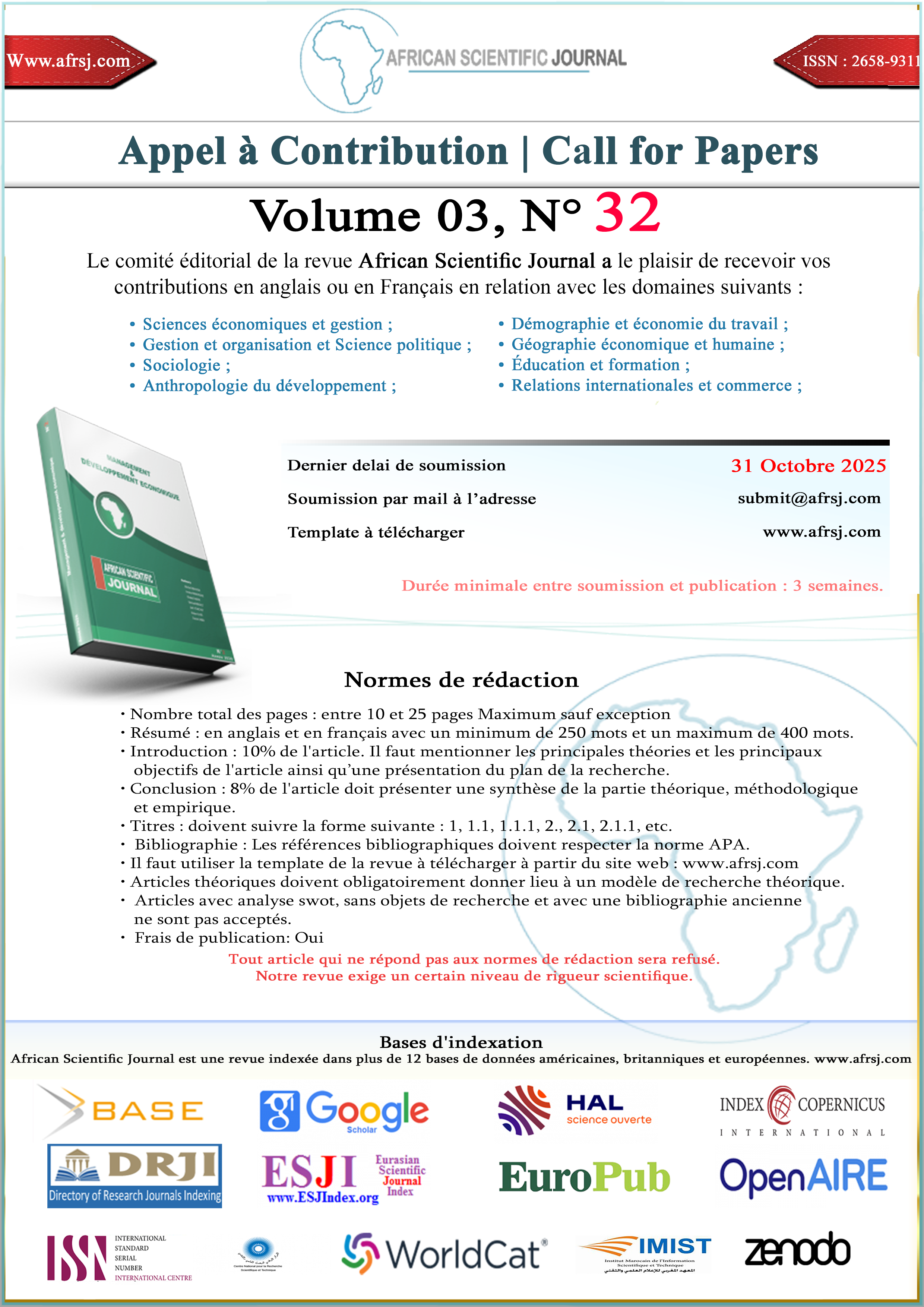Exposition d’œuvres d’art contemporain Les contraintes et difficultés majeures liées aux expositions d’œuvres d’art contemporain au : Burkina Faso
Exposition d’œuvres d’art contemporain Les contraintes et difficultés majeures liées aux expositions d’œuvres d’art contemporain au : Burkina Faso
DOI:
https://doi.org/10.5281/zenodo.17289467Abstract
Résumé
La culture en général et l’art plastique en particulier participe au développement économique, social et politique en contribuant à la création de richesses et d’emplois ainsi qu’au rayonnement international du pays. En effet, l’art plastique représente 21,8% de la part culturelle et renforce l’identité, la cohésion sociale et le vivre-ensemble. Les œuvres d’art doivent donc être régulièrement exposées au public pour instaurer progressivement l’habitude de visite et d’achat. Toutefois, la diversité d’œuvres qui sont créées au quotidien demeure peu connue à cause de l’irrégularité des expositions et de leur faible visite. Les artistes et autres acteurs sont confrontés à des difficultés financières, techniques, infrastructurelles et professionnelles qui entravent la promotion et commercialisation des œuvres. Les défis sont donc énormes au niveau de l’Etat, des artistes et des populations. A travers une méthodologie basée sur des enquêtes qualitatives et quantitatives auprès d’un échantillon de 85 personnes retenues sur une population mère de 250 personnes, ainsi qu’une revue documentaire, les solutions suivantes sont proposées : améliorer la formation des artistes, renforcer leur professionnalisme, mieux accompagner les acteurs dans l’organisation des expositions et engager une vraie stratégie de médiation à même de mieux intéresser et attirer le public dans les expositions.
Mots clés : exposition- infrastructures- financement- médiation- professionnalisme
Abstract:
Culture in general, and the visual arts in particular, play a pivotal role in economic, social, and political development by contributing to wealth creation, employment opportunities, and the international visibility of the nation. Specifically, the visual arts account for 21.8% of the cultural sector and serve to reinforce identity, social cohesion, and collective coexistence. Consequently, artworks should be exhibited on a regular basis in order to gradually cultivate the public’s habit of attending exhibitions and purchasing art.
Nevertheless, the diversity of artworks produced on a daily basis remains relatively unknown due to the irregular organization of exhibitions and their limited attendance. Artists and other stakeholders are confronted with financial, technical, infrastructural, and professional constraints that hinder the effective promotion and commercialization of artistic production. These challenges are therefore considerable for the State, the artists, and society at large.
Drawing on a methodology that combines qualitative and quantitative surveys conducted with a sample of 85 individuals, selected from a parent population of 250, along with a documentary review, the following solutions are proposed: enhancing the training of artists, strengthening their professionalism, providing greater institutional support for the organization of exhibitions, and implementing a comprehensive mediation strategy aimed at fostering public interest and increasing audience engagement in exhibitions
Keywords: exhibition- infrastructure- financing- mediation- professionalism
Downloads
Published
How to Cite
Issue
Section
License
Copyright (c) 2025 African Scientific Journal

This work is licensed under a Creative Commons Attribution-NonCommercial-NoDerivatives 4.0 International License.





















